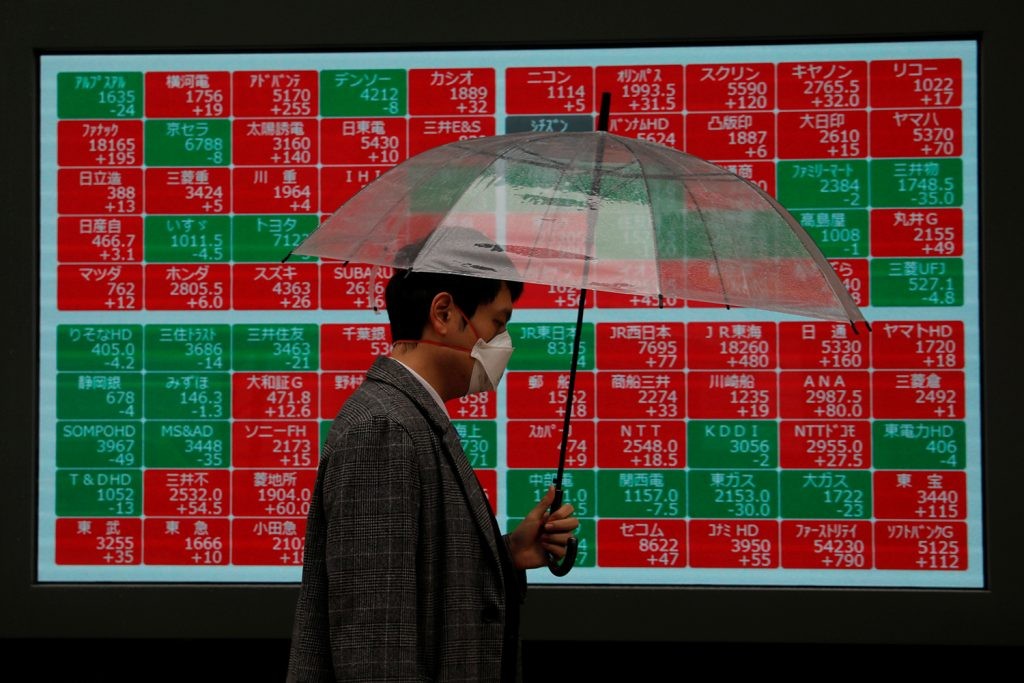Corona virus: A Playbook for Investors - Part 2
As the world is awakening to COVID-19’s economic consequences, markets are undergoing the most severe decline since 2008. Massive monetary and fiscal intervention is coming and it will be a game changer for global financial markets.

A decade-plus of very loose financial conditions has pushed valuations to extreme levels and left financial markets vulnerable to external shocks. COVID-19 was just that as it delivered a lethal combination of supply and demand shortfalls in addition to playing into one of mankind’s most fundamental fears. The brunt of the shock is being felt across financial markets and has brought back the memory of the 2008 market crash.
The situation is however very different from the GFC; interest rates are already basically at zero (or negative) and the global stock of debt is far higher than it was in 2007. Corporate and sovereign debt are at all time-high as a percentage of GDP and the risk is that a major decline of asset prices will trigger a domino effect of defaults and throw the global economy into a 1930s style kind of depression. Policymakers are acutely aware of such danger and it is most likely they will do “whatever it takes” to avoid the worst case scenario. As already opined in the first part of this note, Occam’s Razor principle is once again in order and massive intervention is the likely reaction function.
Problem is that the kind of monetary policy widely adopted over the last decade is not going to suffice. We had a very clear example of that last week when the US Fed’s “shock and awe” emergency 50 bps cut garnered no effect whatsoever as markets proceeded to make new lows after the announcement. This time the intervention will require a combination of both monetary and fiscal policies. Furthermore these policies will have to be “unconventional” to put a floor to markets and try to avert economic Armageddon. Below a thumbnail view of what such policies may look like.
As asset prices have been largely decoupled from fundamentals, a 50–60% price drop may be needed before a market-based floor is found. That is not an option and policymakers are going to have to resort to widespread asset purchases to stem the decline before the panic starts to affect the real economy. What that means is that the Fed will start buying bonds and equities and expanding their balance sheet to 100% or more relative to GDP. The analogue here is what the BOJ and, to an extent, the ECB and BOE, have already been doing for the best part of the last decade. Some of the most obvious targets for such asset purchases are corporate bonds for companies such as GM, Ford or GE that are either already zombified or are going to be in a post-COVID world. Asset purchases may also be aimed at equities as already hinted by former Fed chair Janet Yellen in a recent interview.
Once a floor to financial markets is secured, the next order of business will be addressing the effects of the virus on the real economy; enter “QE for the people”. COVID-19 will provide cover for the most extensive fiscal intervention in post-WWII as governments this time bypass the ineffective banking system and deliver cash directly into people’s wallets. The famed “helicopter money”, a.k.a MMT (“Modern Monetary Theory”) is coming and it will be deployed regardless of any debt or deficit constrain. To this extent technology may play a key role as the introduction of digital currencies (“CBDC”) is fast-tracked in a number of countries to narrowcast economic stimulus through what is, in essence, programmable money. Think subsidies that are delivered with conditions attached, e.g. they can be spent only within a certain date or only for certain purposes etc.
The impact on financial markets and the economy will be profound and far reaching. Once a vaccine is developed and the health care emergency has receded, companies and households awash in cash from the aforementioned fiscal subsidies, will return to consumption and investment with a vengeance. In the short-term markets will rejoice and we may witness a massive relief rally. Possibly even recovering up to the recent all time highs. In classic Rothschildean fashion, it may turn out that the current bloodshed may have provided in hindsight the opportunity to buy some great assets at a discount.
While the above scenario may offer market participants some relief, more cognizant investors may already want to start thinking a few steps ahead and position accordingly.
As liquidity is force-fed into the system, the monetary base will grow at a faster rate than the economy hence generating inflation. Meaningful consumer price inflation has been absent for decades and policymakers are unlikely to see that as an issue. On the contrary, it will be a very welcome outcome as a way to workout at least a part of the massive stock of debt accumulated over the decades. Furthermore, governments will abhor any tightening of financial conditions for fear of cutting economic reflation short.
The combination of aging demographics, recency bias and inflation will prove to be a game changer for financial markets and, more widely, for the global economy. Any student of history knows that epidemics have often served as accelerators of major epochal changes that were already at play. The Justinian plague of 506 sealed the end of the Roman age, the Black death of 1348 bolstered the end of feudalism and widespread epidemics greatly favor the colonial expansion of western powers in the 15th and 16th centuries. It may turn out that COVID-19 did the same for the fiat currency, US dollar-based system born in the 1970s out of the ashes of Bretton Woods and ushered the beginning of a new financial and economic order.
This article was originally published on LinkedIn.